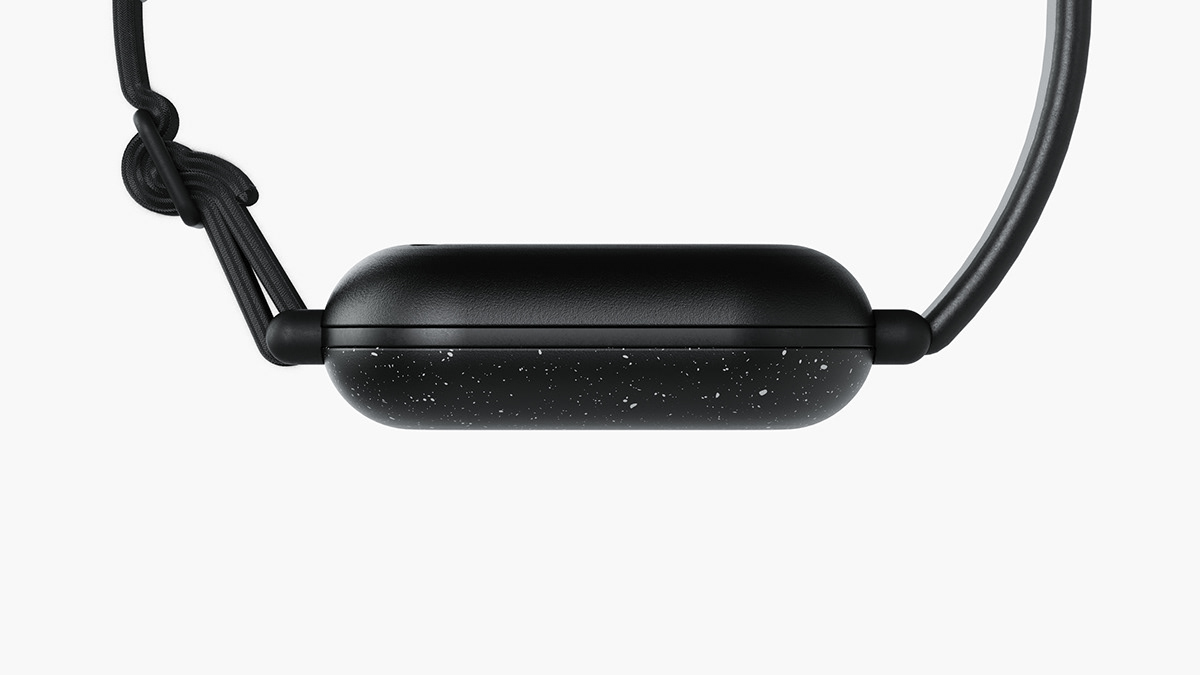

Concept
Gasp is a Class II A biomedical device for the prevention of respiratory attacks in asthmatic individuals.
Asthma is a respiratory disease characterized by improper inflammation of the airways. It is a chronic condition that is very common in pediatric age and stigmatizing; being able to prevent attacks reduces the symptoms, susceptibility and frequency of the disease, but most importantly, it allows asthmatics not to give up their habits and their quality of life.

Inspiration
In an asthmatic individual, receptors lining the muscle walls of the bronchi sense specific substances and activate improper muscle contraction, reducing airflow and obstructing the airway. Along with smooth muscle contraction, excessive mucus production contributes to airway closure making it difficult for asthmatic individuals to breathe and perform any activity.

Triggers, frequency, and severity of attacks vary from person to person, but the first symptom to arise is always the progressive inflammation and occlusion of the airways that generates a vibration. When this propagates in the air as an acoustic wave it can be traced to the symptom of wheezing, as a mechanical wave it propagates by bone conduction from the rib cage to the shoulder-elbow-wrist system.

Gasp's technology allows it to pick up mechanical waves arriving at the wrist and convert them into an electrical pulse thanks to a piezoelectric sensor inside the strap. Unlike commercially available products, the device can then be moved from its highly stigmatizing chest position in favor of a less visible solution such as a watch.

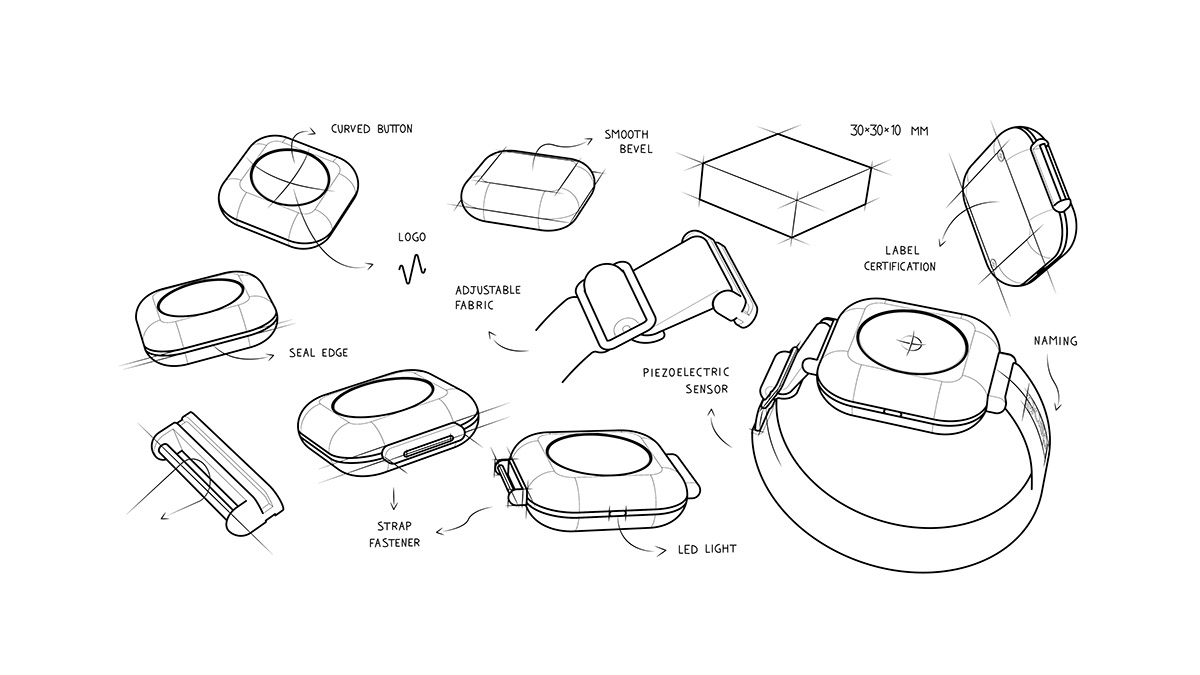
Gasp
Gasp is a small and compact wearable technology, like a watch. The shape is simple and elegant, smooth and functional. The smart device is able to collect, process and compare the data collected by the sensor with the subject's breathing patterns through a customized algorithm. The processing is completely autonomous and independent from the smartphone: this is why it is also suitable for pediatric use. In addition, the closure system allows the length of the strap to be adjusted so that it can adapt to the child's growth.



Operation
The device recharges by magnetic induction and has a life span of about four days. It is turned on by holding down the button for several seconds. Turning on is followed by turning on the side LED. In the first stage, the device is trained by the user who signals to it by pressing the button that he or she has a seizure. This is how it retrieves the data collected by the sensor until it detects, and is always able to recognize, the breathing pattern preceding the asthmatic attack. To alert the user Gasp releases haptic feedback via the strap and the indicator light starts flashing, until the user presses the button that confirms the intake and takes his or her medication.
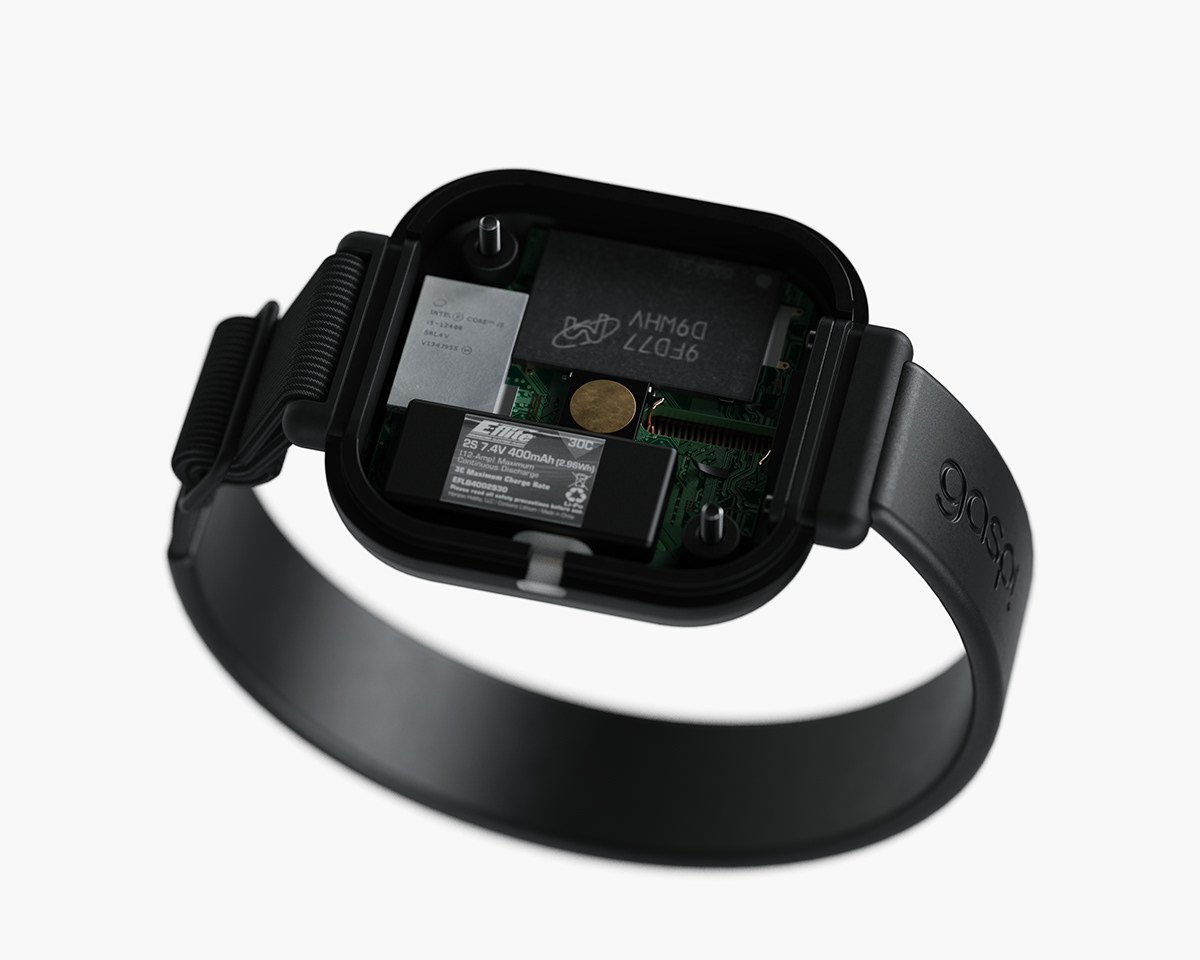


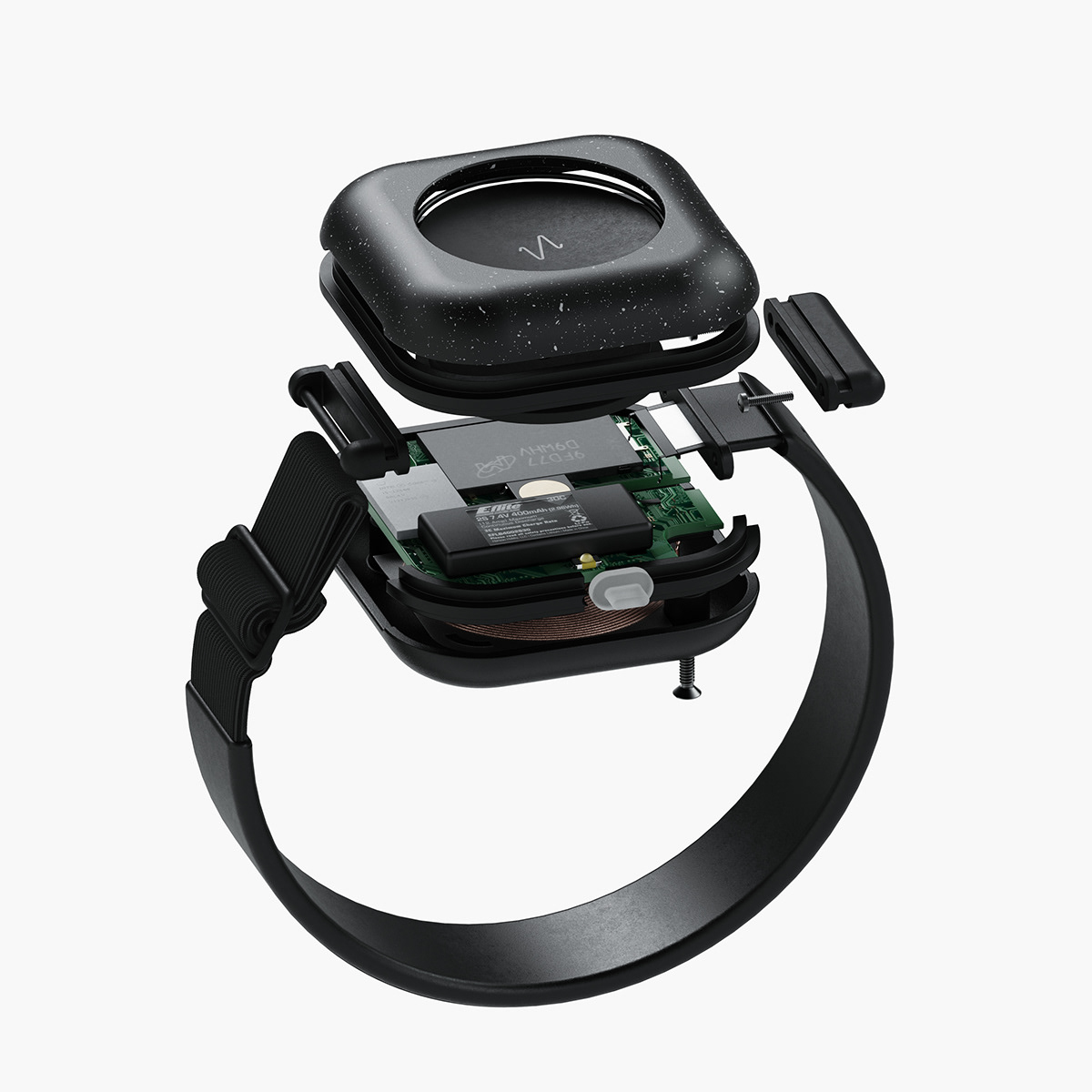
Materials
Gasp is a biomedical device that must be worn at all times, so the materials chosen are all biocompatible and durable. The strap part that protects the sensor is made of PDMS, polydimethylsiloxane, a biocompatible, hydrophobic, insulating, inert silicone that is resistant to chemical attack, oxidation and aging. The adjustable fabric part is made of nylon, which is biocompatible, durable and lightweight. The main shells are made of #tideocean material, a plastic recycled from ocean waste, durable and moldable, already widely used in the watch and electronics industry.

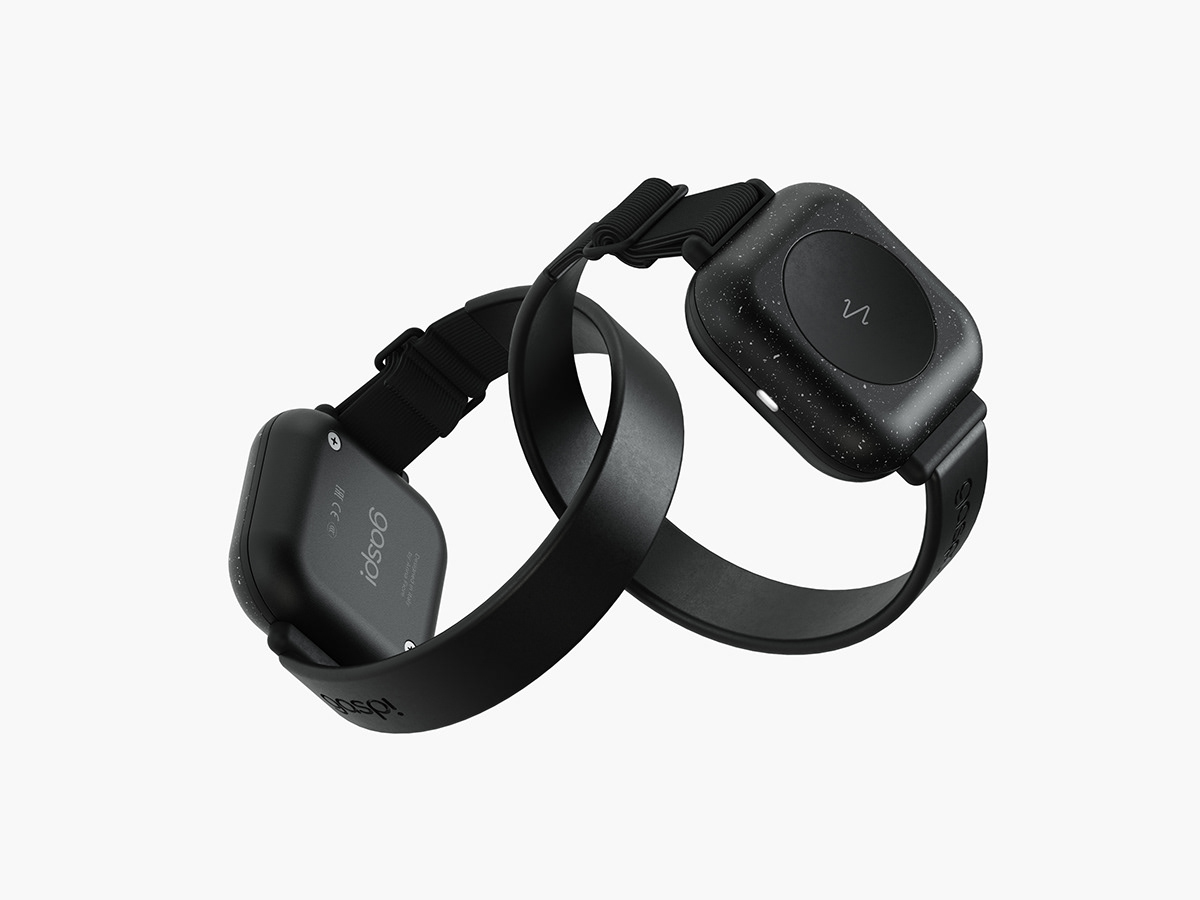





Identity & naming
The product aims to break away from the typical view of medical devices, which are cold, very technical and stigmatizing; rather, it wants to be a fun, colorful and pop product. This emerges in the choice of bright colors such as orange, light blue, white, and black, but also in the use of a recycled speckled material that makes the device very on-trend and fun. Gasp, as a naming, retrieves on an onomatopoeic level the sound of wheezing breath and the translation into the comic world of wincing.





Thanks for watching.
Designed by Anna Fiore
Designed by Anna Fiore



